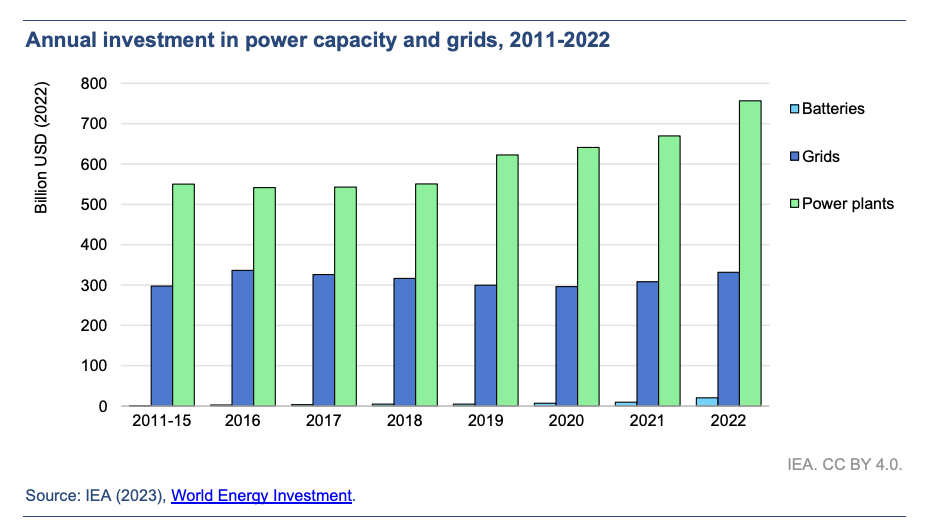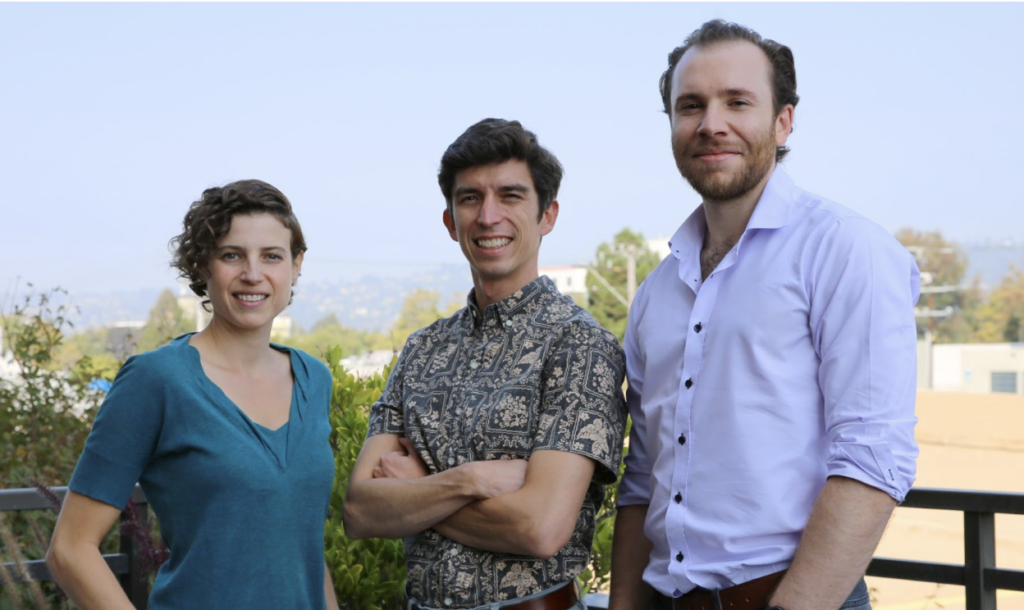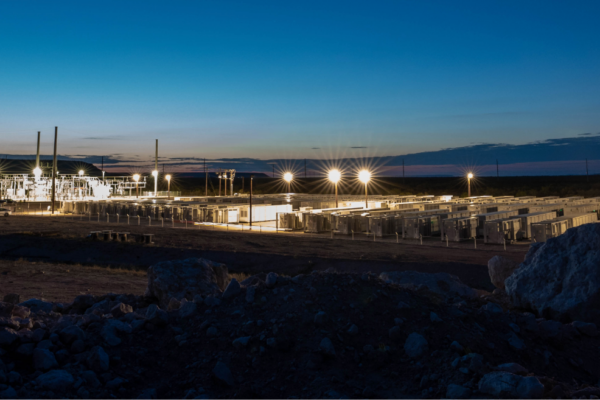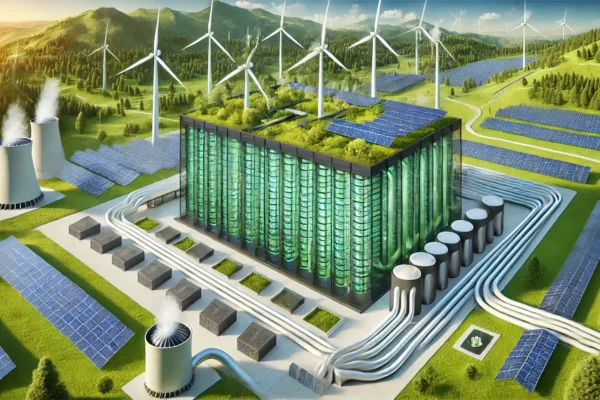To hit any of our global climate goals, we simply must decarbonize energy, which accounts for 73% of global CO2 emissions.
To adequately reduce emissions, all energy sectors must be decarbonized, and much of the near-term opportunity lies in the deployment of renewables. Large-scale renewables are expected to both drive the decarbonization of electricity generation, which accounts for 40% of all energy-related emissions, and support the growth in generation needed to meet the forecasted doubling of global electricity demand.
The grid, however, is facing a myriad of challenges beyond those posed by the intermittency of renewables. These include challenges with permitting and building new transmission lines, resulting in power that can’t make it to end customers, a proliferation of a new and diverse set of distributed energy resources participating bi-directionally in both drawing and supplying energy to the grid, and mounting extreme weather events wreaking havoc on existing grid infrastructure.
There are a limited set of low-carbon-emission energy generation options capable of filling solar and wind’s gaps (i.e., “firming”). Today, firming is accomplished primarily with lithium-ion batteries that enable greater grid flexibility and resilience by providing better control over electricity flows. Using lithium-ion batteries to firm variable renewable generation is prohibitively expensive, however, and generally limited to one- to four-hours of storage.
Other potential pathways to firm renewables include the deployment of new high capacity factor generation technologies such as innovative geothermal (read more about geothermal’s potential in our article here) and nuclear, or new forms of energy storage.
In our view, the ideal solution set includes some combination of all three technologies in concert with the continued growth in renewables.
Pairing renewable generation with cost-effective long duration energy storage
In California, where solar and wind generate 34% of the state’s electricity, both sources present the challenge of supplying too much power when we least need it during the middle of the day and not enough when we need it most in the evenings. Last year in California, the intermittency of these sources led to the curtailment of 2.4 TWh of solar and wind production, and with the expected growth in both renewables and distributed energy resources, the challenges Californians are living with will only intensify.
This is not a California-specific problem. Texas also has a high penetration of solar and wind, representing 29% of the state’s electricity, combined with extreme seasonal temperature swings. The perfect storm ultimately led to the Great Freeze in 2021, impacting up to 10 million people at its peak and lasting almost nine days.
The IEA anticipates grid-scale battery storage will be a key pillar in the path to net zero by 2050, with global battery storage growing from 18GW in 2020 to 610GW in 2030 and 3,100GW in 2050, driven by an increasing need for system flexibility, especially where the share of variable renewable energy covers almost all demand in certain hours of the day.

Grid resilience is also not a US-specific problem. In Germany, there is a word for periods of windless darkness that can extend for days at a time: “dunkelflaute.” Navigating these dark doldrums may become even more challenging in light of Germany’s decision to decommission their remaining three nuclear power plants earlier this year. Then there’s Pakistan, which has experienced two separate and devastating grid failures in just the last three years, each impacting over 200 million people. The resilience of Pakistan’s energy sector remains one of the primary obstacles to its economic growth and stability.
Global investment in renewables has nearly doubled since 2014, but it’s plain to see that investment in grids and batteries has not kept up. Grid-scale energy storage, which stores excess energy during off-peak periods and offloads that energy when demand rises, is the perfect solution to mitigate the challenge posed by intermittent renewables.

Today, the vast majority of new grid storage deployments are in the form of lithium-ion batteries due to their performance characteristics, the scale of production capacity globally, and a lack of geographic constraints that limit technologies such as pumped hydropower. Yet lithium-ion batteries are also limited from a technology perspective due to their relatively high cost driven by expensive but lightweight materials such as lithium and cobalt, which have complex, fragile, and volatile supply chains. Lithium is an important material for electric vehicles, where size and weight are key considerations.
The primary consideration for the grid storage application is cost, and lithium remains a fundamental challenge to bringing costs down (battery-grade lithium, at time of publishing, cost about $19,000 per ton).
To simultaneously stabilize and decarbonize the grid cost-effectively, it is essential that renewable energy generation is paired with innovative grid-scale energy storage.
Meet Inlyte Energy: Advancing the Clean Energy Transition With Low-Cost, Reliable Grid Batteries
After receiving his PhD and post-doc from Stanford, Founder and CEO Antonio Baclig founded Inlyte Energy with support from the Activate Fellowship and Lawrence Berkeley National Lab’s entrepreneurial program.
Inlyte Energy is developing, manufacturing, and commercializing proprietary low-cost, high-performance sodium-iron batteries for intraday grid-scale energy storage – solving the growing intermittency challenges caused by the expansion of renewables.
Sodium and iron are both abundant commodity raw materials that cost about $300 and $130 per ton, respectively. Extremely low-cost raw materials are a key ingredient to developing a low-cost final product.

Inlyte Energy’s battery is fit-for-purpose for stationary grid storage with all the right attributes customers are looking for, including low cost, high performance, and exceptional safety characteristics.
Existing batteries store energy in comparatively expensive materials that include lithium but also extend to nickel, cobalt, vanadium, magnesium and more. Inlyte Energy, however, uses sodium and iron as the only energy-storing materials.

Inlyte Energy leverages 40 years of research, development, manufacturing and commercialization experience in sodium metal halide battery technology from Beta Research, which they acquired in 2022, enabling them to move quickly in a market that is poised for rapid growth.
Why Valo Invested in Inlyte Energy
Electricity is the bedrock of the modern economy. Economic development, GDP, and quality of life are inherently coupled with more reliable, affordable, and abundant electricity. Solar and wind are low-cost and emissions-free, but as mentioned before, they present considerable intermittency challenges.
US utility-scale solar and land-based wind have demonstrated average capacity factors of approximately 24% and 40%, respectively, with significant seasonal fluctuations. This creates a challenge for the grid, which must constantly balance the flow of electrons in real-time.
Utility-scale batteries are the perfect solution to manage the increasing stress and volatility of aging grid infrastructure. It’s clear that we need better control over how and when we store generated energy so that we can dispatch it when needed. Batteries are also an enabler for further growth of low-cost renewable energy generation, which drives economic growth and energy sector decarbonization.
Inlyte Energy’s purpose-built technology boasts a unique combination of low cost, high round-trip efficiency, long asset lifetime, and exceptional safety.
Energy security and resilience are top of mind across the world. Critical material supply chains are both volatile and fragile. Inlyte Energy’s proprietary technology and deep know-how positions them to commercialize a game-changing advanced storage solution that can be both sourced and manufactured in the US.
Inlyte Energy’s battery is optimized to be the lowest-cost solution, with all the performance characteristics needed for the use case of four- to ten-hour grid storage.
We look forward to supporting the team as they continue bringing their mission to life.
If you are a startup enabling the clean energy transition, reach out to our team at hello@valoventures.org to start the conversation.



